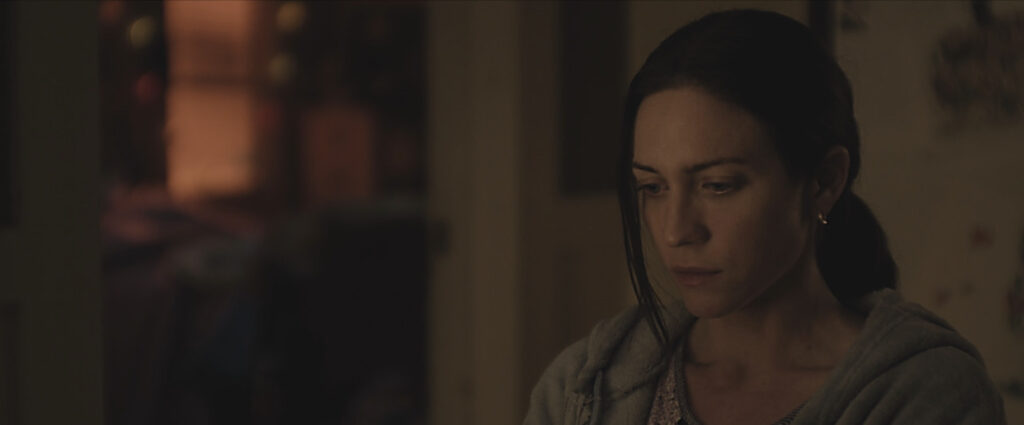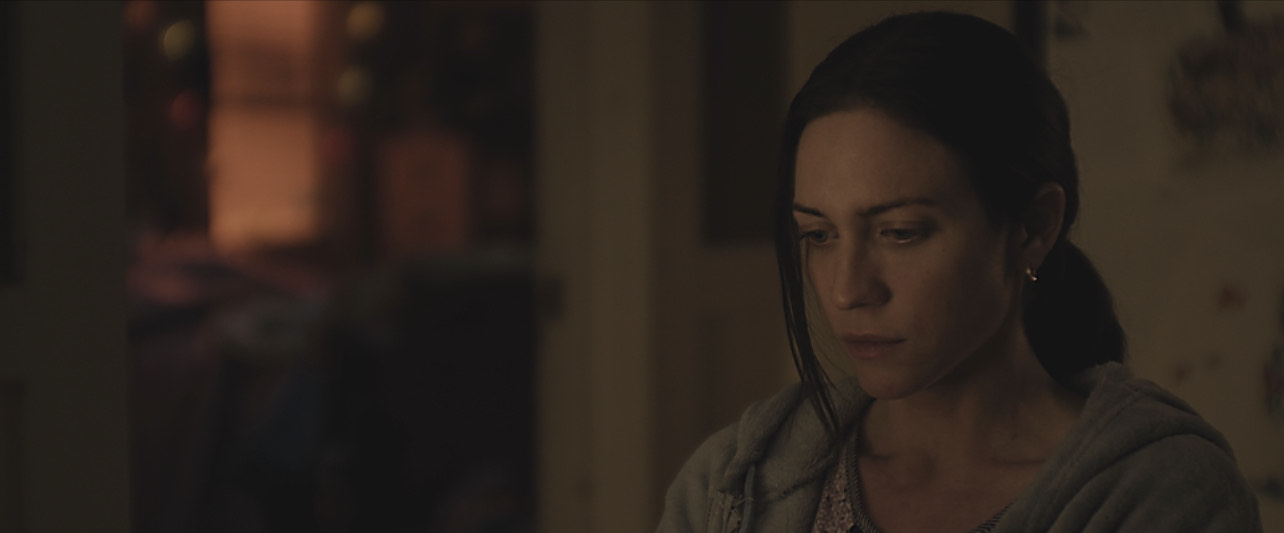In a country that prides itself on freedom, how can we stand by as women are forced to cross entire states for medical care? When red, white, and blue become the colors of sirens, how do we wave the red, white, and blue of our flag? These questions are vast, but writer/director Nazrin Choudhury doesn’t shy away from them in her award-winning short film Red, White and Blue.
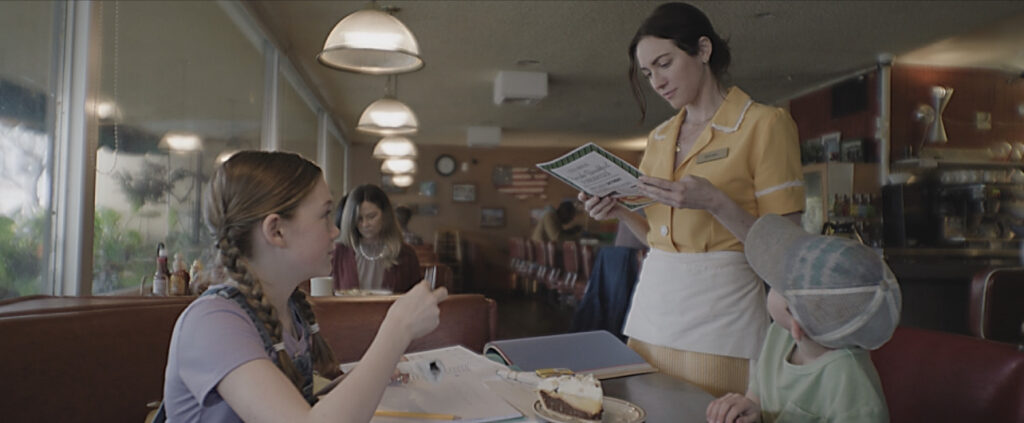
Colored by the recent overturning of Roe v. Wade and the decades-long battle in the United States over reproductive rights, Choudhury’s film opens in present day Arkansas on a waitress named Rachel (Brittany Snow). The pregnancy test in her hands reads positive, but with so little money coming in from her job and two kids to support already, not to mention the laws in her home state, she won’t be able to get the abortion she so desperately needs.
But when a stranger offers her money, Rachel and her daughter Maddy (Juliet Donenfeld) hit the road. The journey to the clinic is long, but the mother and daughter relish in each other’s company. By the time they make it to the overbooked clinic, it’s unlikely that Rachel will be able to make an appointment. However, when the jarring truth about Rachel’s abortion comes to light, one nurse (Taryn Leggett) is sympathetic to her situation and does what she can to help the woman who traveled hundreds of miles from her home to be here.
With a striking title and a setting in modern day America, Red, White and Blue’s opening shot is clear: a positive pregnancy test in the hands of an underpaid waitress is not a sign for congratulations. Dread looms over every scene and every line of dialogue, and money becomes the sole object in protagonist Rachel’s field of vision. “Past Due” bills hang limply from the refrigerator door and the apartment’s pull-out couch is not just where Rachel sleeps, it’s in the same room as the kitchen. Not to mention, Rachel is forced to steal loose change from her daughter’s piggy bank to supplement what she’ll need to pay the medical bill. Every detail culminates a picture of this woman’s life, the financial burdens she bears, and the hole she now finds herself in needing an abortion.
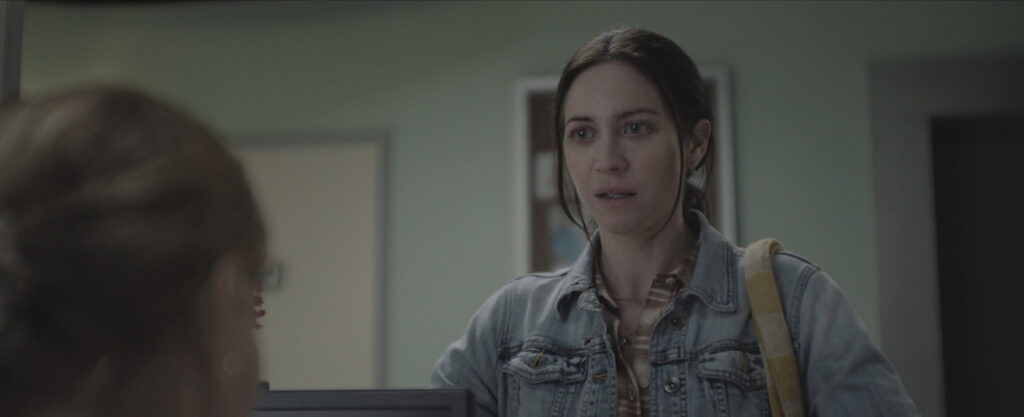
To lengthen these feelings of unease and uncertainty, Choudhury’s film relies on moments of quiet. The night after she calculates the cost of the procedure, the soft tapping of piano keys is replaced by the sound of a dog barking in the distance as Rachel tosses and turns in bed. When she wakes the next morning, her children crawl into bed with her and she wraps her arms tightly around them. The camera pushes in, her face a mix of scattered emotions tempered with the apparent love she bears for her kids. Like an intake of breath, the purely diegetic sequence refuses us respite from Rachel’s anxiety; we’re trapped in this hopeless situation with her.
The choice is smart in and of itself, but it also serves to amplify the moments where music is present. Composer Peter Karr lets sobering piano notes float throughout the film, delicately adding to the melancholy inherent in Rachel’s journey. Or consider the road trip montage, which is set to the tune of a rock song, “Bloody Typical,” that blasts through the speakers (T. Jepson, S. Wood, D. Kemp, N. Wastell, P. Martin). The moment is jarring, but we adjust quickly to what is arguably the most normal moment in the whole film: a mother and daughter singing together in the car. Choudhury is discerning, choosing particular moments to forego music in favor of the quiet, thereby building an auditory map of Rachel’s journey as much as a visual one.
Various shots (Adam Suschitzky) further these tonal shifts, from the anxious reflection of Rachel’s face in the framed photo of her daughter, to the stunning shot of a red droplet splattering the stark white cover of a pillowcase. True, Rachel and Maddy’s road trip is far from a grim montage; as they venture across state lines, Maddy looks out on dreamlike vistas, and the world seen through the lens of a camera feels wide to us, perhaps a reflection of how Rachel and Maddy feel. But even so, Suschitzky refuses to limit himself to the beauty of the visual sphere. Rather, he leans into the dark undertones of the film’s premise, reminding us that while the world may appear kind, the laws that govern it are not.
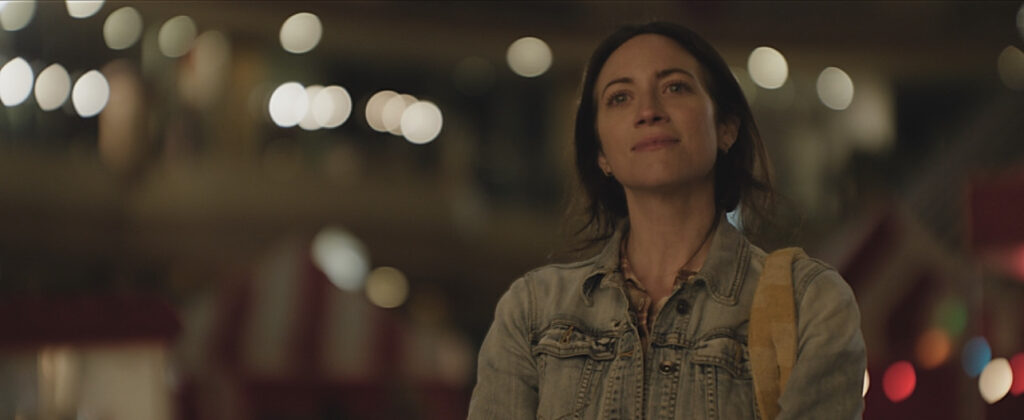
As the film reaches its climax, the camera pushes in on Rachel, triggering a memory of the night that changed her life. Everything slows as Rachel stands wide-eyed in her apartment, the use of slow motion forces us into Rachel’s position, unable to escape a moment which seems to go on and on and on. Suschitzky even tightens the aspect ratio, taking away the freedom of the full screen and boxing Rachel in. The 4:3 square stays until the end of the film, a constant visual reminder that, without question, nothing will ever be the same for either us or Rachel.

